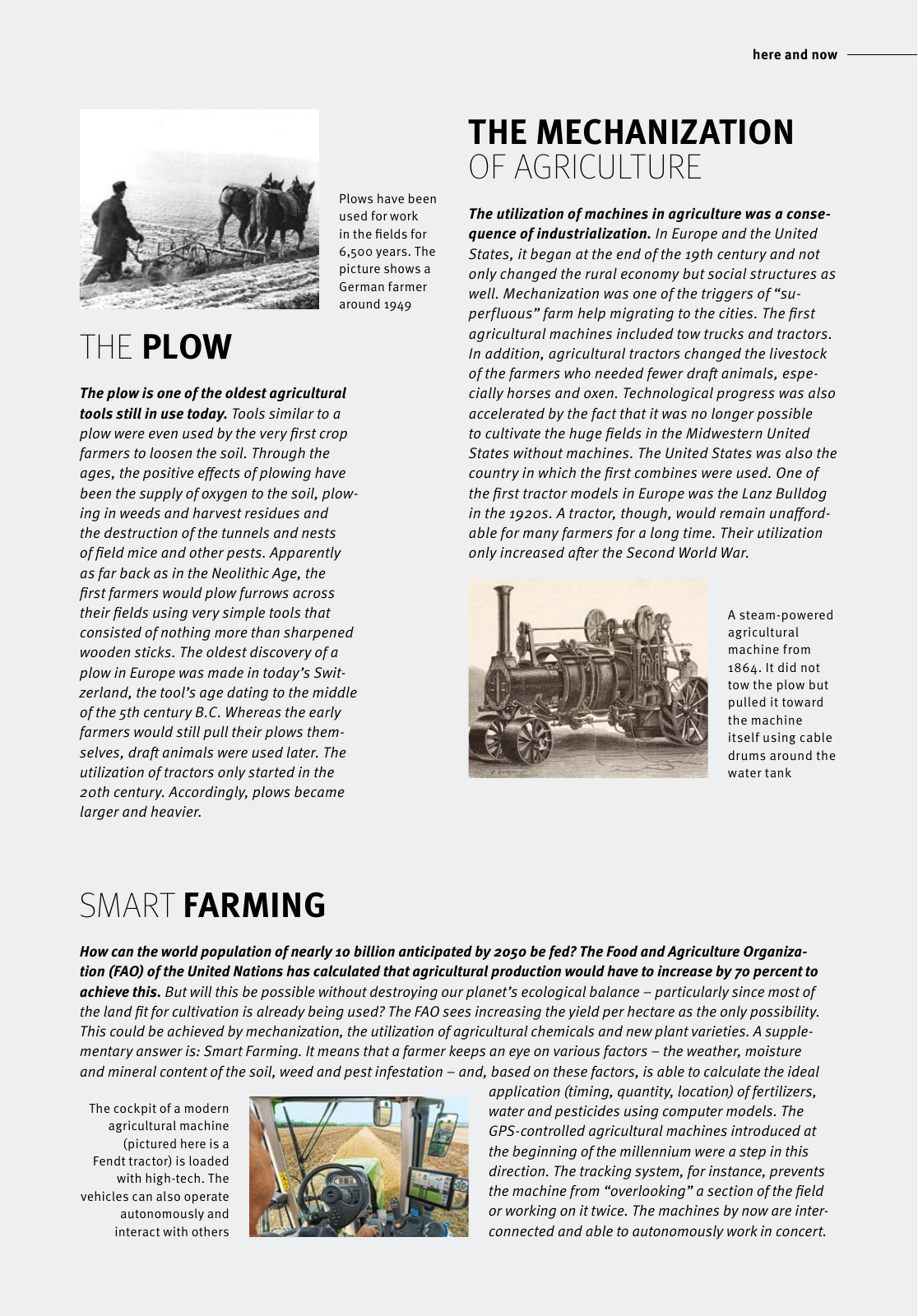A steam powered agricultural machine from 1864 It did not tow the plow but pulled it toward the machine itself using cable drums around the water tank How can the world population of nearly 10 billion anticipated by 2050 be fed The Food and Agriculture Organiza tion FAO of the United Nations has calculated that agricultural production would have to increase by 70 percent to achieve this But will this be possible without destroying our planet s ecological balance particularly since most of the land fit for cultivation is already being used The FAO sees increasing the yield per hectare as the only possibility This could be achieved by mechanization the utilization of agricultural chemicals and new plant varieties A supple mentary answer is Smart Farming It means that a farmer keeps an eye on various factors the weather moisture and mineral content of the soil weed and pest infestation and based on these factors is able to calculate the ideal application timing quantity location of fertilizers water and pesticides using computer models The GPS controlled agricultural machines introduced at the beginning of the millennium were a step in this direction The tracking system for instance prevents the machine from overlooking a section of the field or working on it twice The machines by now are inter connected and able to autonomously work in concert SMART FARMING The utilization of machines in agriculture was a conse quence of industrialization In Europe and the United States it began at the end of the 19th century and not only changed the rural economy but social structures as well Mechanization was one of the triggers of su perfluous farm help migrating to the cities The first agricultural machines included tow trucks and tractors In addition agricultural tractors changed the livestock of the farmers who needed fewer draft animals espe cially horses and oxen Technological progress was also accelerated by the fact that it was no longer possible to cultivate the huge fields in the Midwestern United States without machines The United States was also the country in which the first combines were used One of the first tractor models in Europe was the Lanz Bulldog in the 1920s A tractor though would remain unafford able for many farmers for a long time Their utilization only increased after the Second World War THE MECHANIZATION OF AGRICULTURE The plow is one of the oldest agricultural tools still in use today Tools similar to a plow were even used by the very first crop farmers to loosen the soil Through the ages the positive effects of plowing have been the supply of oxygen to the soil plow ing in weeds and harvest residues and the destruction of the tunnels and nests of field mice and other pests Apparently as far back as in the Neolithic Age the first farmers would plow furrows across their fields using very simple tools that consisted of nothing more than sharpened wooden sticks The oldest discovery of a plow in Europe was made in today s Swit zerland the tool s age dating to the middle of the 5th century B C Whereas the early farmers would still pull their plows them selves draft animals were used later The utilization of tractors only started in the 20th century Accordingly plows became larger and heavier THE PLOW The cockpit of a modern agricultural machine pictured here is a Fendt tractor is loaded with high tech The vehicles can also operate autonomously and interact with others Plows have been used for work in the fields for 6 500 years The picture shows a German farmer around 1949 h e r e a n d n o w 79

Hinweis: Dies ist eine maschinenlesbare No-Flash Ansicht.
Klicken Sie hier um zur Online-Version zu gelangen.
Klicken Sie hier um zur Online-Version zu gelangen.